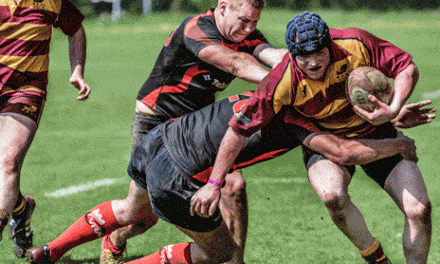Qigong therapy, a form of traditional Chinese medical practice, appears to be a potential complementary treatment for osteoarthritis dependent upon the capability of the healer, according to a study conducted at University of Medicine and Dentistry of New Jersey (UMDNJ), Newark, NJ, by Kevin Chen, PhD, MPH, and Adam Perlman, MD, MPH, FACP.
The study, titled Effects of external Qigong therapy on osteoarthritis of the knee, was published in the April 2008 edition of Clinical Rheumatology. An abstract of the report can be found at the PubMed Web site.
“Although further research needs to be conducted, Qigong may be an effective complementary treatment for osteoarthritis,” said Perlman, chair of the department of Primary Care, executive director of the UMDNJ-Institute for Complementary and Alternative Medicine, and a co-investigator on the study. “Given the limitation and potential adverse effects of drug intervention of osteoarthritis, Qigong therapy might prove to be a valuable option as a supplement to conventional treatment.” Further study is required to determine the efficacy of the practice.
Arthritis is the leading cause of disability in the United States, and osteoarthritis is the most common form of arthritis—affecting some 21 million Americans. Patients suffering from osteoarthritis are increasingly using complementary and alternative-medicine treatments, including Qigong therapy, used in China for treating arthritis.
Qigong is a general term for a variety of traditional Chinese energy exercises and therapy. Traditional Chinese medicine (TCM) suggests the existence of a subtle energy (qi) circulating throughout the body and in the surrounding environment. According to TCM, good health is the result of free-flowing, well-balance qi, while sickness or pain is the result of a blockage of the qi flow or unbalanced qi in the body.
For the purpose of the study, two Qigong therapists were invited to participate, using external Qigong therapy (EQT), which involves hand movements, similar to therapeutic touch, acupressure on specific points, focused attention, and other mind-healing techniques to direct the therapist qi or energy into the patient. This is performed in an effort to remove sick qi, eliminating disease or relieving pain.
Both healers were trained in China, but from different traditions. The first healer had lineal heritage in Taoism and was known for his anticancer training and achievement. The second healer was the fifth generation born into a traditional Chinese-medicine family but did not attend medical school. It was noted that there is considerable variability in the forms of EQT practice, varying by school and practitioner.
Study participants reported significant pain reduction and functionality in varying degrees after therapy. The researchers indicated during the course of the study that participating healers produced significantly different outcomes.
[Source: Newswise]




